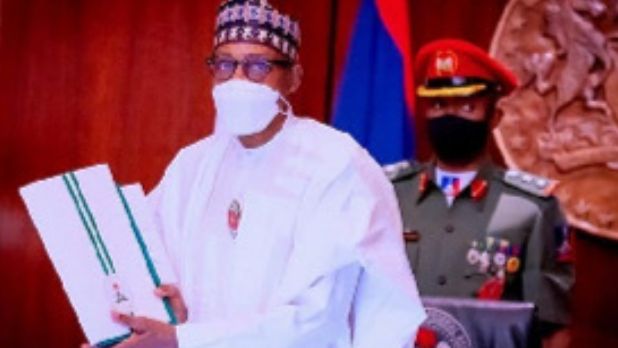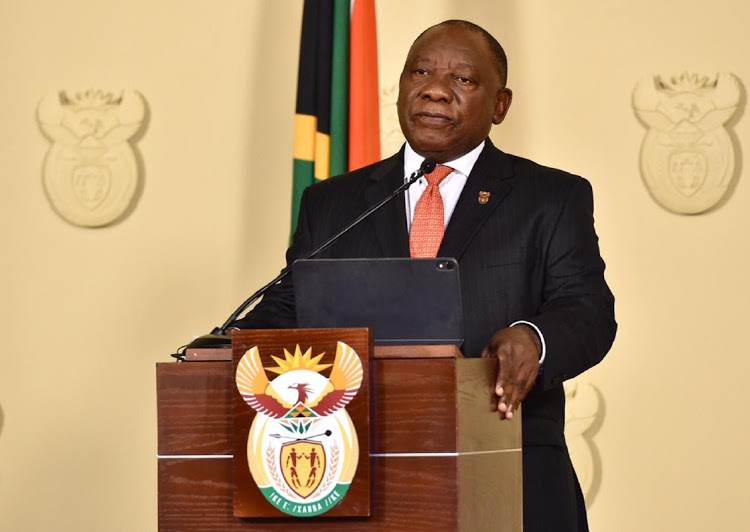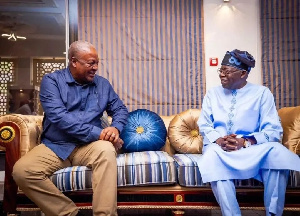How has Nigeria’s digital currency fared since its launch?

“It needs to be entirely binned,” the 30-year-old told Al Jazeera.
He downloaded the app the same day it was released on October 25, 2021. Months later, he says that its features are neither valuable nor reasonable.
When asked if he knew the eNaira could be accessed via USSD codes a quick shortcode available even for users without smartphones and if he would consider trying that option, Ndubuisi simply said: “Never heard that. Not interested in finding out.”
When the eNaira, the digital form of the naira and the first national digital currency in Africa, was launched by the Central Bank of Nigeria (CBN), officials of the apex bank said it would allow for financial inclusion and fiscal benefits to ultimately boost the economy.
In a televised speech at the time, President Muhammadu Buhari said the adoption of the eNaira and blockchain technology “can increase Nigeria’s GDP by $29bn over the next 10 years”.
The eNaira was created as part of the CBN’s cashless policy to improve cross-border trade, expand access to financial services, increase remittances from a large diaspora base and ultimately boost the country’s economy.
Half of Nigeria’s estimated 200 million people have no access to bank accounts, so the apex bank claimed it was hoping to facilitate day-to-day transactions between business owners and their producers and customers across the country.
Six months on, analysts are wondering if the new digital platform will succeed where the traditional banking system has not.
Demand and supply
According to a report by Enhancing Financial Innovation & Access (PDF), only a third of Nigerians in rural areas are within proximity of financial service providers. And even for those in urban areas, the continuous fluctuations of the naira against the United States dollar still trigger recurring frustrations.
As of April 2022, cryptocurrency exchange Kucoin reported that 33.4 million Nigerians trade or own crypto assets despite restrictions on cryptocurrency transactions by the CBN, using peer-to-peer networks.
The introduction of the eNaira came seven months after the CBN’s restriction of cryptocurrency transactions because digital coins have become well-suited for conducting many illegal activities “including terrorism financing and tax evasion”.
Unsurprisingly, it is seen by some members of the public as a natural response to the trend of increasing cryptocurrency usage, but the jury is still out on whether the eNaira can improve financial inclusion.
“Adoption of digital currency is definitely on the rise, given the fact that businesses and individuals are constantly looking for ways to preserve value,” Jennifer Echenim, a Lagos-based front-end engineer working with Web3 technologies, told Al Jazeera. “However, naira keeps devaluing; as such, adoption of the eNaira looked like a failure even before it started.
“It appears to me as a follow-up on restrictions placed on other digital currencies […] Proper research wasn’t done before its launch,” she said. “For a currency to be valued, there needs to be a demand for it; that’s basically what drives digital currencies today (demand). No one is looking for Naira. It isn’t even acceptable or usable outside Nigeria. Building a digital currency on that is definitely a fail.”
In 2020, the naira traded at 360 to a dollar in the black market but as at Friday, the exchange rate was $1:N600.
Cash is still king
At the launch, CBN governor Godwin Emefiele said more than 2,000 customers had been onboarded.
In January 2021, it was announced that 95 days after its launch, the eNaira app was downloaded 694,000 times from 160 countries with more than 35,000 transactions. Today, according to local media reports, there have been approximately 700,000 downloads in total.
By comparison, just one month after El Salvador launched its own digital currency “Chivo”, three million people – almost half of the population – had downloaded it. “There are more Salvadorans with Bitcoin wallets than traditional bank accounts,” Forbes wrote in October 2021.
In addition, the eNaira Speed Wallet app is rated 2.2 out of 5 on the iOS App store and 2.9 out of 5 on the Android Play Store. And there seem to be far more criticisms than commendations on the app’s page and in real life.
It took Oghenemarho Orukele, an engineer and researcher based in southern France, nearly three days to create an account after download in October 2021. The sign-up form asked for his bank verification number and then the app refused to let him continue with an email address, he said.
When he eventually got to the second step of the process, the One-Time Password (OTP) he was supposed to receive via email came hours later. It took two days for it to be fixed, after which Orukele said “it was smooth sailing”.
Eugene Adavore, a 22-year-old UI/UX designer downloaded it to see if the design was user-friendly and ascertain “in the long run, if the product would meet the need it was designed for”. He called it a “brilliant initiative” but said it needed a thorough redesign to succeed.
Many economists also believe that eNaira’s macroeconomic purpose of a cashless society is yet to be fulfilled.
In January 2012, CBN introduced a cashless policy to encourage electronic-based transactions and reduce the circulation of physical cash nationwide. It was piloted in Lagos, the commercial capital, and implemented on a national scale two years later.
But in many parts of Nigeria, cash is still king.
For Ese Osamwonyi, senior analyst at Lagos-based socio-political risk advisory SBM Intelligence, lack of compliance with the policy – like the slow adoption of the eNaira – is evidence that the government has not been inclusive enough in its pursuit of a cashless economy.
He told Al Jazeera that Nigerians living below the poverty line carry out daily transactions with street vendors, motorcycle taxi (okada) riders and other retail businesses that conduct business in cash. For this large group, e-payment channels are not a priority.
“The inclusion of these segments of last-mile retailers in the usage of the eNaira for daily business transactions will boost adoption amongst low-income earners/individuals within the poverty bracket,” said Osamwonyi.
In response, the CBN said it has created viable solutions for this demographic, including provisions to use other forms of identification (e.g. fingerprints) to access their eNaira wallet and USSD codes for those without smartphones.
“[The] CBN policy cannot be effective if the proportion of the informal sector is a lot larger than the formal sector,” Hassan Mahmud, CBN’s director of monetary policy, told Al Jazeera.
CBN says it is working closely with telecom operators to ensure access to the eNaira even when an individual is out of service. The goal, Mahmud said, is to enhance monetary policy penetration by moving many of the sectors within the economy that are outside the banking system into it.
Years ago, the CBN established the Nigeria Incentive-Based Risk Sharing System for Agricultural Lending to promote agribusiness by giving rural capital to farmers. With the eNaira, the CBN believes these funds can be transferred more efficiently, subverting middlemen and curbing corruption.
But small and medium enterprises – which amount to 96 percent of businesses in Nigeria and 84 percent of jobs in the country, according to PricewaterhouseCoopers – may not be able to benefit from the eNaira due to lack of information about it.
Al Jazeera spoke to dozens of small business owners; most of them were hearing about eNaira for the first time, and many said they were not aware of any business owner currently using it. Some asked if it differed from conventional bank apps, and how.
In Lagos, 29-year-old baker Zainab Yakura N’jie is keen to adopt the app even though she has not downloaded it yet. “The world as we know it is becoming very digital so, it will make things easier and faster to be able to make payments through your phone,” she told Al Jazeera.
To target people like N’jie, Osamwonyi says sensitization is key.
“The government needs to increase awareness of the benefits of the cashless economy to the players as well as share insights on electronic channels and payment modes available to entrepreneurs in the informal sector of the economy,” he said.





